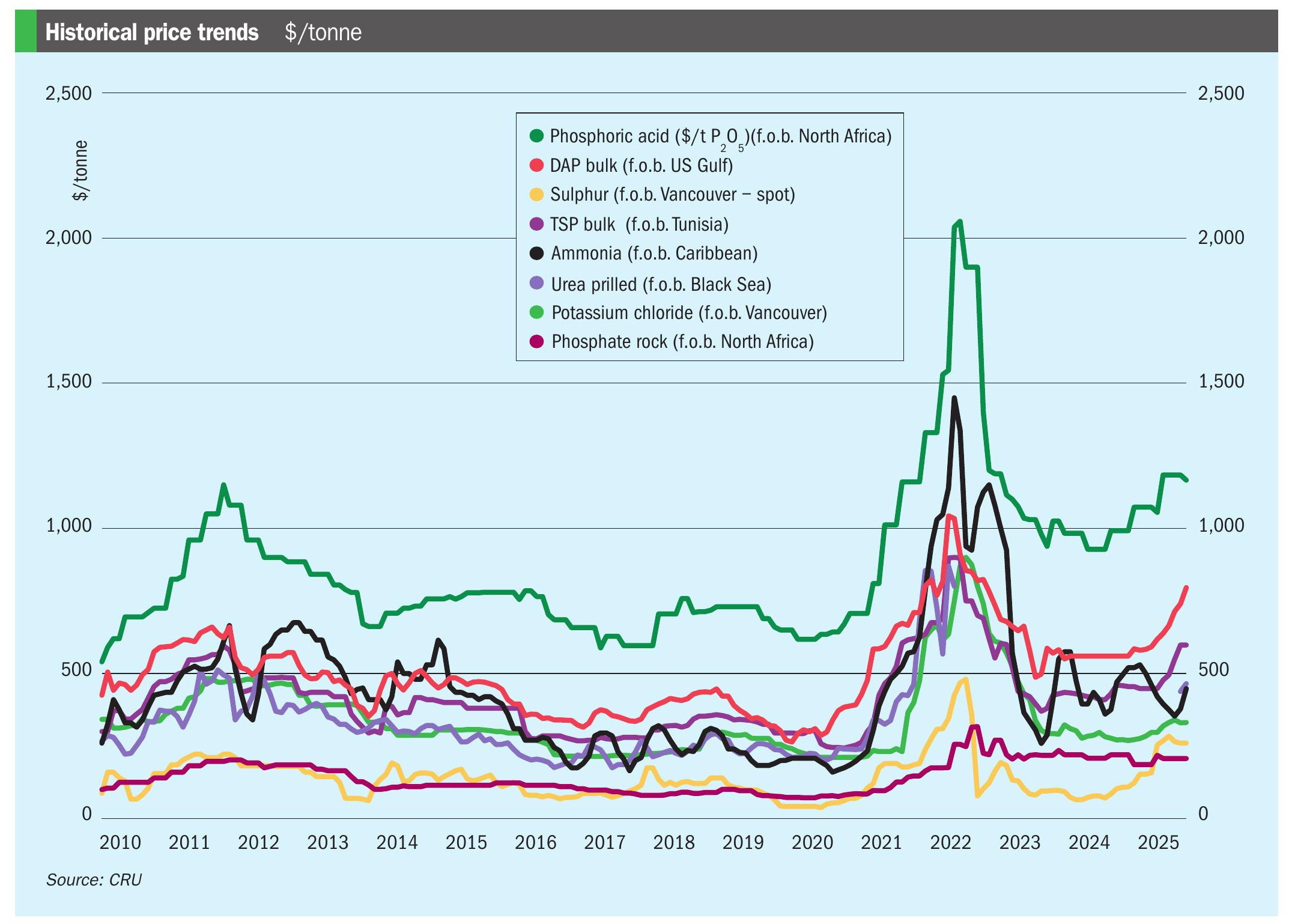Nitrogen+Syngas 377 May-Jun 2022

31 May 2022
Market Outlook
Market Outlook

AMMONIA
- Yara and Mosaic shocked markets with a settlement of $1,625/t c.fr for April, up $490/t on March, and the highest ever price recorded at Tampa, as the removal of Russian and Ukrainian ammonia supply impacted global prices, and Baltic rates soared to $1,500/t. However, April saw some of the global dislocations caused by the Russian conflict begin to ease, while the high prices saw buyers in the US delay purchases, leading to the Tampa price falling back $200/t for May loadings.
- There was also some clarification from the US government that agricultural commodities – including fertilizer – were allowed to be imported from Russia, though payment still remains problematic as Russia is unable to use the SWIFT system.
- At the moment buyers are holding back, looking to see how far prices will fall again. A sale of ammonia from Kaltim was withdrawn after failing to achieve a price target of $1,125/t f.o.b. Bontang, with unconfirmed bids said to be up to $300/t lower. Nevertheless, with up to 20% of market supply via the Black Sea out of the market, there is still strong support for prices in the absence of large-scale demand destruction.
UREA
- After a market flurry in March caused by the situation in Ukraine, urea markets quietened during April as prices began to fall again, and major buyers stayed away from the market, awaiting clarity on future pricing, leaving significant volumes uncommitted.
- India, as ever, was expected to provide support, with state purchaser RCF indicating after a delay of a month in tendering that it was likely to tender for up to 1.5 million tonnes of urea for July delivery. While India appeared to be signalling that it would not be taking urea from Russia, availability from other sources appeared to be sufficient to make up for this.
- It is expected that the RCF tender will set the tone for inquiries from other potential buyers in Brazil, Mexico and southeast Asia. However, while trade has been thin, demand is still believed to be strong and supply still uncertain in the absence of Black Sea tonnages.
METHANOL
- There were signs in late April that methanol prices had peaked, at least for the short term, in all major markets; Europe, China and North America. Argus assessed its European monthly methanol contract price at e520/t for May, down e47.5/t from April on rising inventories in Rotterdam and stable demand.
- Methanol prices tend to track oil, which also peaked in March. Longer term, however, Morgan Stanley has raised estimates for 3Q oil prices from $120/ bbl to $130/bbl in spite of project demand destruction, because of the removal of 2 million bbl/d of Russian supply from the market.
- Methanol demand remains fairly strong in derivative markets in Europe and North America, in spite of rising costs and supply chain challenges. However, key market China is suffering from new covid-related lockdowns which could see methanol demand fall.






